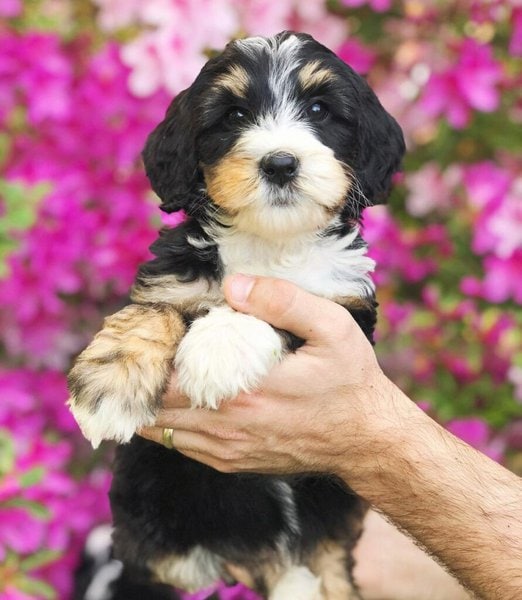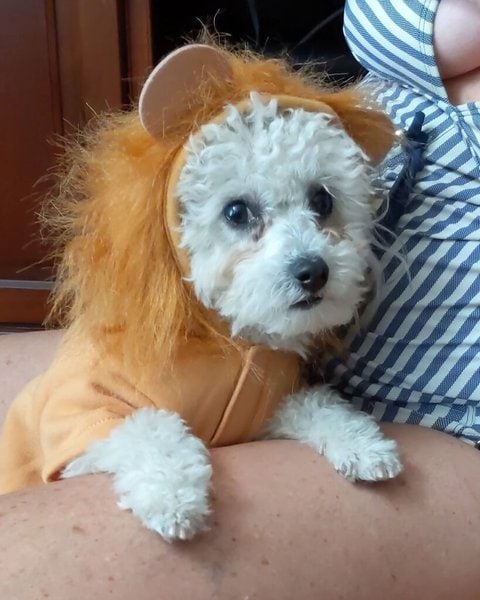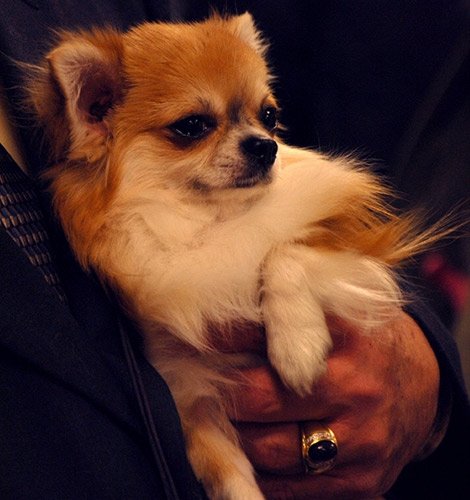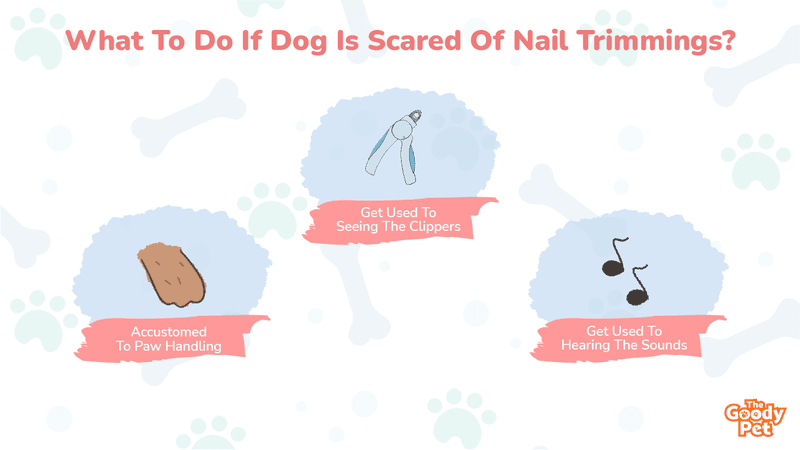Nail trimming, although a minor routine for humans, is not exactly a walk in the park for many dogs. Thankfully, there are some steps that you can follow to take the stress out of nail trimmings for your pooch, which we’ll detail below.
Try To Prevent Your Puppy From Developing Their Fear Of Trimmings

If you’re reading this article while your mutt is still getting his potty training, then you’re in luck, as you can still prevent its fear of nail clippers and grinders from developing at an early age.
To do so, rub your fur companion’s feet and put some pressure on its toes. Then, introduce the clippers slowly by placing them on the ground and letting the dog inspect them at its own pace. Also, make sure to open and close the clippers slowly and repeatedly so that your puppy can get used to its sound before it touches its nails.
Finally, start the trimming process by cutting the tips of your pooch’s nails while providing treats and praise. All of that can contribute to making the overall nail trimming experience positive – enjoyable, even – for your puppy.
What To Do If Your Dog Is Already Scared Of Nail Trimmings?

Granted, teaching a puppy is easier, but old dogs can also get used to trimmings and start tolerating them. Keep in mind that the training process will take more time, especially if the dog had a bad experience with clippers before. That said, should you take your time and avoid rushing the process, your dog can be desensitized.
Get Your Mutt Accustomed To Getting His Paws Handled
Before moving to using the clippers, you need to train your dog to allow paw handling. Doing so requires patience, and you must do it slowly and regularly.
When your dog is relaxed, touch its shoulder gently, and make your way to the paws. Rub the feet gently while using a soothing voice to keep your pooch calm and relaxed. Move your fingers through the mutt’s toes and squeeze them gently. Once that’s done, move on to applying pressure to the nails themselves and tapping a non-threatening object on them. Besides using a soothing voice, make sure to pair the handling with treats and praise. All of that can help your mutt relax and calm down.
If your dog seems to be stressed and retracts its paw at any step of the way, stop what you’re doing immediately, and only continue when it settles down. Repeat the process in very small increments of time several times per day.
Let Your Dog Get Used To Seeing Clippers And/Or Grinder
Once you feel that your dog is finally comfortable with paw handling, you need to get it accustomed to seeing the nail grinder or clippers. These are mechanical tools, after all, and they can be scary for animals, especially if they have past trauma with them.
The first step here is just to let the tool lay around the house. If you’re using a dog nail grinder, remove the batteries to prevent accidental starts. Make sure your dog can see it by placing it around its food bowl from time to time. If your pooch shows any sign of discomfort, which can happen a lot at first, just move it away from him.
To make the process easier, summon your dog from time to time and pick up the tool in its presence while acting that you’re happy to have it. Repeat the act several times a day for a few weeks.
Start With Simple Sounds And See Your Dog’s Reaction
Once your dog is comfortable with the grinder being around and doesn’t seem to be bothered by its existence, add in the batteries and move on to the next step, which is acquainting your dog to the sound of the nail trimming tool. Simply turn on the grinder without touching your dog and check its reaction. Keep doing the same a few times a day until your dog doesn’t mind the sound anymore. Don’t forget to praise and treat your dog every time.
The process is the same if you’re using clippers instead of a grinder. Just open and close the clippers without touching your dog while offering it treats and praise.
When your dog is eager to hear the sound of the grinder or clippers to get its treats, you’re ready to proceed to the next step.

Combine Paw Handling With The Grinder Or Clippers
This step is simple. Just like you did in the first step, you need to handle and tap your dog’s tap, but with the grinder or clippers this time. Begin by rubbing its paw with one hand while holding the tool with the other and placing it on the floor.
When the dog is comfortable with you holding the clippers or grinder, gently touch the tool to one toe while talking with a soothing voice. Next, retract your hand gently and offer your dog a treat. Repeat the same process the next day but with a different nail.
Keep doing the same for a few days while offering your pooch a treat every time until your dog until you can touch all of your companion’s nails on any given day with no signs of stress whatsoever.
Start The Actual Nail Trimming
If you’re using a grinder, put the batteries, and touch tap the nails of your dog before turning the tool on. Then, turn on the grinder, and touch the nail for a few seconds then retreat, give your dog a treat, and turn off the grinder. Next, tap twice on your dog’s nails, and stop.
Repeat the same process the next day and the one that follows, until you can do it with any nail while your dog is calm. Once that happens, you can start holding the grinder for long periods.
If you’re using clippers, hole your dog’s paw with one hand, get the tool with the other, make the clipper sound, then proceed to touch the nails and trimming their tips. Be careful when doing so not to hit the quirk and get your pooch traumatized. You don’t need to cut the nails of all feet in the same session. Take your time, and do it in small increments. Don’t forget to change the blades of the clippers regularly.
Final Thoughts
The process of getting your dog used to nail trimmings can take some time, but it’s well worth it. Cutting your dog’s nails is necessary for its good and to keep everyone around it safe, which is why you need to make trimming easier for both of you.





